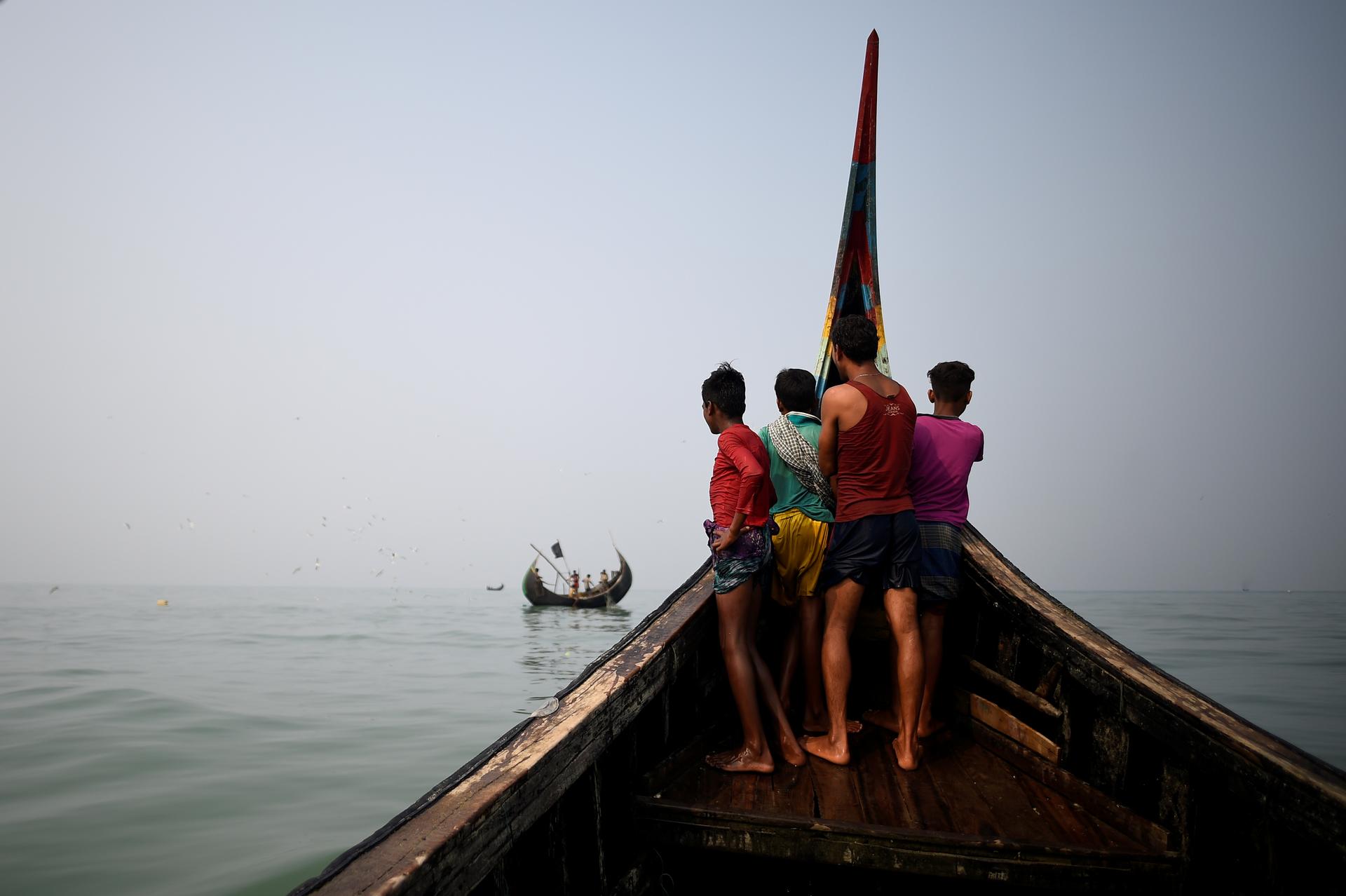Rohingya survivors face a new indignity: Banishment to a half-sunken island
Rohingya refugees crew on a fishing boat in the Bay of Bengal near Cox’s Bazaar, Bangladesh, March 24, 2018. Now the Rohingya may be pushed even farther from home: banished to a remote island off the coast of Bangladesh.
The Rohingya Muslims have been driven out of their homeland along the coast of Myanmar and into Bangladesh through army purges that United Nations officials call “genocidal.”
Now the Rohingya may be pushed even farther from home: banished to a remote island off the coast of Bangladesh. There are nearly 1 million Rohingya refugees living in squalid camps in Bangladesh, one of the world’s most crowded nations. Officials there are planning to relocate many of them to this tiny island as soon as next year.
The island is out in the middle of the Bay of Bengal — about three hours off of mainland Bangledesh — and it’s mostly composed of silt. It’s been created naturally over the past 20 years but even 50 years ago, you couldn’t find it on a map.
So far, there’s been no official poll on how Rohingya broadly feel about the move but there is vocal pushback. A Rohingya-run advocacy news outlet called Arakan Times has been posting footage of roughly a hundred or so refugees in the camps chanting “no way, no way” — meaning, “no way” will they go to this island.
A Rohingya man named Nay San Lwin is an activist and blogger living in Germany who has visited refugee camps in Bangladesh multiple times this year, namely camps near Cox’s Bazaar — which is now flooded with international aid groups.
“Nobody likes this plan. I have talked with many fellow Rohingya in the camp. Nobody wants to move there,” said Nay San Lwin. “At least in Cox’s Bazaar, they have access to everything. There are humanitarian organizations. Aid organizations. UN organizations. But once they move to this island, they will have everything limited.”
Related: Help is scarce for Rohingya children with intellectual disabilities
The island is incredibly small with no real human settlement and very possibly no electricity. It’s about 20 miles from mainland Bangladesh, meaning it would take hours to get there by boat. And it sits right in the path of vicious monsoons that come every year.
Nay San Lwin worries the island is too small to build up a big presence of aid workers, hospitals, clinics and so on. He said he thinks it could be even worse than the apartheid conditions in the Rohingya homeland, a part of Myanmar called Northern Rakhine State.
“This island is [even] worse than the Northern Rakhine State. You know, Northern Rakhine State, we call it the ‘killing fields.’ This island is also considered like a killing field. Because you don’t know what will happen in the monsoon season,” he said. “They could be killed in an hour or in a few minutes when there is a cyclone. There is no guarantee at all.”
(Editor’s note: The phrase “killing fields” is very potent in Southeast Asia because it alludes to the Khmer Rouge genocide in 1970s Cambodia.)
It’s hard to say what the next steps will be. Myanmar has talked about repatriating a very small number of people but Rohingya are terrified about a return to apartheid conditions and refuse to go.
Related: Bangladesh pauses Rohingya repatriation plans amid refugee protests
For now, the government of Bangladesh is building cement complexes on the island that will house Rohingya refugees in the future. The rooms are about square, six and a half feet per side, and have bars on the windows.
The UN and aid groups have warned against the move.
Our coverage reaches millions each week, but only a small fraction of listeners contribute to sustain our program. We still need 224 more people to donate $100 or $10/monthly to unlock our $67,000 match. Will you help us get there today?
